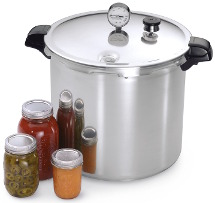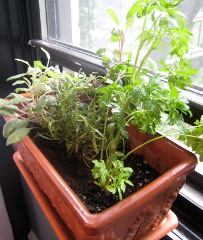- Details
- Written by Rebekah White Rebekah White
- Published: September 21, 2017 September 21, 2017
 It's not a new concept. Both health and culinary experts alike have espoused the benefits of eating seasonally for decades. In-season foods tend to be more fresh and flavorful, offering distinctive advantages to both your overall wellbeing as well as your taste buds.
It's not a new concept. Both health and culinary experts alike have espoused the benefits of eating seasonally for decades. In-season foods tend to be more fresh and flavorful, offering distinctive advantages to both your overall wellbeing as well as your taste buds.
It seems simple, but eating seasonally can be tough in locales that experience harsh winters, or for individuals living within modest means. However, when done correctly, eating seasonally can be done throughout cold winter months, and on any budget.
The Meaning of a Seasonal Diet
Eating seasonally is the process of only eating foods that are grown at the time of the year in which you are eating them. The strictest version of this process would mean that you eat squash in the late summer months, artichokes in the spring, and, if you live in northern New York, probably never eat citrus (unless you eat trucked-in fruits).
While that sounds severe, the benefit of eating seasonally is that you'll spend less money at the grocery store. Since your food is not being trucked thousands of miles, you'll end up saving money by buying it in season. You're also more likely to buy produce from local, sustainable farmers.
To be fair, eating seasonally is something we do almost naturally. In October, you are far more likely to eat pumpkin pie than you are berry pie. You might reach for an apple instead of a peach. We do this because the food tastes fresher at those times, and also because that's when the stores tend to have the best deals and the most plentiful quantities.
Staying Within the Budget
Eating seasonally does not, and should not break the bank. If you choose to eat local produce when it's in season, consider growing your own garden. Although this does require some time and energy to start, it's a relatively inexpensive option that can allow you to grow a bountiful harvest to meet your family's needs; regardless of how large they might be.
You can also choose to frequent a local farmer's market or food co-op for more variety. You may also join a local Community Supported Agriculture (C.S.A.) project to receive a set amount of harvested produce per week.
Maintaining Nutrition Throughout the Winter Months
The answer is simple: stock up. By stockpiling massive quantities of healthy, fresh produce when it's available, you'll have enough to last throughout the winter.
You'll find that most winter vegetables aren't actually grown during the winter. They just store well. These include carrots, turnips, beets, cabbage, onions, pumpkins, squashes, and potatoes. Root vegetables tend to hold up well in a cellar with little preservation necessary.
Following this model, you can eat summer season vegetables and fruits all winter as well. You just have to do a bit more legwork. Even if you don't have a garden, most grocery stores and farmers' markets offer discounts for bulk purchases of summer vegetables, such as spinach, zucchini, cauliflower, corn, and cucumbers. Almost any fruit or vegetable can be preserved via one of the following methods.
Canning
 This is the economical Presto pressure canner, which is available at Amazon.
This is the economical Presto pressure canner, which is available at Amazon.
A basic water-bath canner costs less than $50 (or you can fashion one for free out of a large capacity boiling pot). For the price of a few mason jars, you'll be equipped to can until your heart is content. Canning is a great option for tomatoes and most fruits, which are easily canned in a water-bath system.
If you are interested in canning other summer vegetables, such as corn, broccoli, or radishes, for example, you'll need to invest in a pressure canner. Although these cost a bit more (upwards of $100), these allow you to can any type of vegetable that can be grown. There's even research to suggest that canned goods can last and maintain their freshness for hundreds of years.
The reason why only tomatoes and fruits can be canned in a water bath is because they are highly acidic. Most vegetables are not at all acidic, and this lack of acidity can allow bacteria to grow and taint the quality of the food. For true food safety, you must can most vegetables in a pressure canner, which reaches high enough temperatures via the use of pressure to kill all of the bacteria.
Freezing
Freezing is virtually free after the cost of freezer bags, and it can be used to preserve any type of produce (with the exception, perhaps, of leafy greens, which will wilt). For best results, use a vacuum sealer to remove all of the air from the packages. This will allow your food to survive at cold temperatures for much longer (up to a year).
Growing Indoors
 Even if you aren't interested in the prospect of starting up a large-scale family garden, growing just a few plants indoors can help you to eat seasonally throughout the cold months.
Even if you aren't interested in the prospect of starting up a large-scale family garden, growing just a few plants indoors can help you to eat seasonally throughout the cold months.
Place a few small planters on your windowsills throughout your house, and you can grow enough spinach or other leafy greens to provide a steady, constant supply throughout the winter. As an added bonus, growing plants indoors is known to boost your overall respiratory health by improving air filtration and quality.
Advanced Growing Techniques
For more advanced gardeners, another option for the winter months is building a greenhouse or a cold frame. Most of us are familiar with greenhouses. Although these don't really allow you to start planting until mid-winter or early spring, they let you get an earlier jump-start on your fresh eating in the springtime.
 Pictured is a cold frame, available from Amazon.
Pictured is a cold frame, available from Amazon.
A cold frame is basically a raised garden bed covered with an old window or other comparable piece of glass. Cold frames collect heat from the sun much more efficiently than greenhouses do, as they are covered on all sides, but allow you to grow vegetables (such as arugula, spinach, or kale) all winter long. Cold frames even work with five inches of snow on the ground!
The Pitfalls of Eating Seasonally
It's tough to eat seasonally if you live in a house full of picky eaters. Eating seasonally requires you to enjoy whatever produce is available at that moment, which means no running to the grocery store for oddball cravings or on a whim.
Eating seasonally also requires you to get creative and try new things. Yes, it may be dull to eat squash three days a week, so try changing things up a bit. Make a soup, or dice it up into small pieces with a roast. Puree it, and make a healthier macaroni and cheese.
To safely begin a lifestyle in which you eat seasonally, try implementing one small change at a time. It can be dangerous to suddenly stop eating certain nutritious vegetables and fruits just because they aren't exactly in season. At the end of the day, eating healthily always trumps eating in season. However, once you find a pattern and lifestyle that are suitable for your budget, health, and taste buds, you will have discovered an option that is both good and good for you.
Related Articles
How Chemical Fertilizers Are Destroying Your Body, The Soil, and Your Food
Clearing The Confusion Surrounding Heirloom Seeds, Organic, Hybrid, and Open Pollinated
